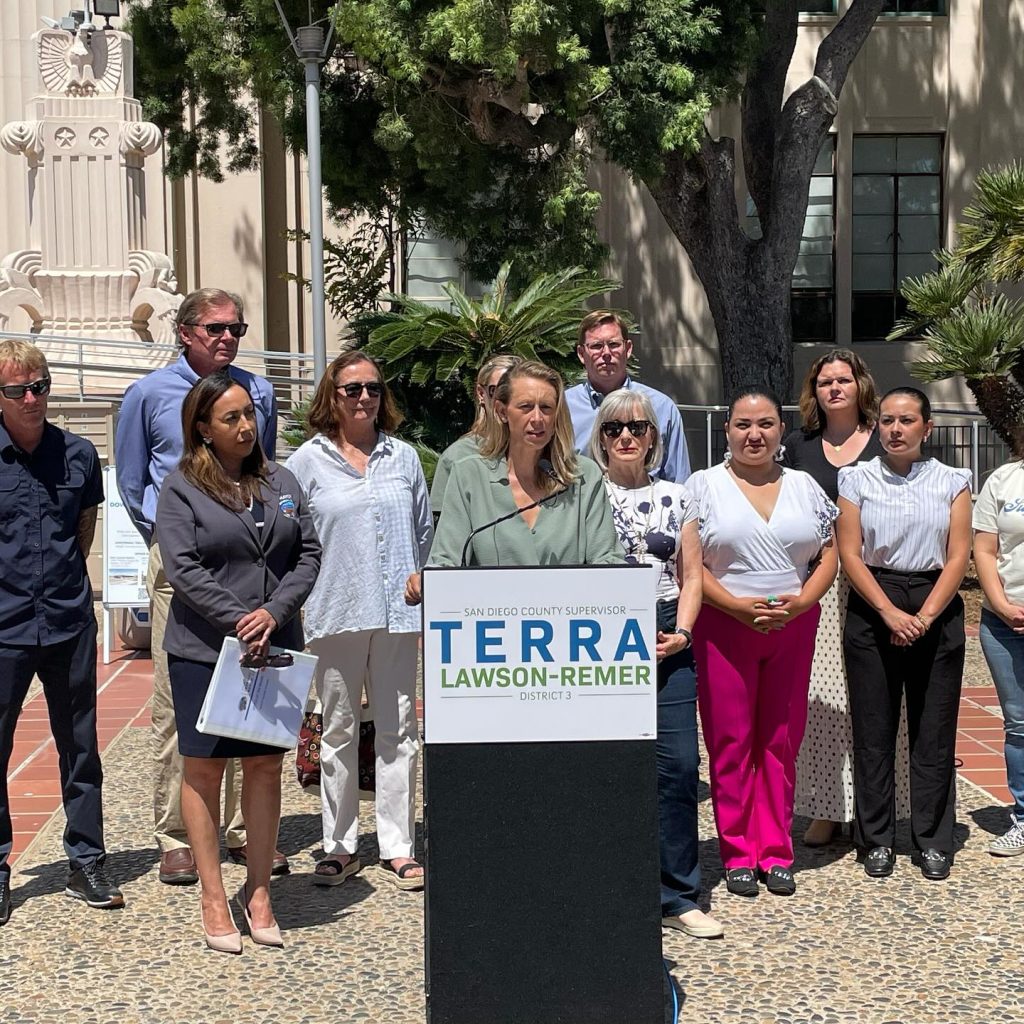
A more robust system of tracking and assessing the public health impact of the Tijuana Sewage Crisis may be in the works.
A proposal designed to substantiate the impact of the pollution may open new avenues for relief – and funding, said County of San Diego Supervisor Terra Lawson-Remer, who will bring it to the board at its June 26 meeting.
“If we’re going to be able to fight for public health, we actually need to know what’s going on in the community,” Lawson-Remer said at a press conference Monday. “That’s why we’re gathering the data.”
With some repairs underway on the crumbling sewage infrastructure on both sides of the border, last week dealt a new blow: A leak at the Hollister Street Pump Station, the United States section of the International Boundary and Water Commission Reported.
“It is suspected that sediment in a surge tank compromised a pressure relief valve, which then led to a spill from the valve,” the IBWC said June 19 on X, formerly known as Twitter. “A new pressure relief valve will be received (June 21) and installed next week, along with the cleaning of the surge tank.”
The commission expects the pump station to be operable by the end of the week, with transboundary flows occurring at Goat’s Canyon and Smuggler’s Gulch in the meantime. The pump station last failed in August 2023, in a 20,000 gallon spill. The IBWC has not yet reported the size of last week’s spill.
Lawson-Remer’s proposal would launch a community health survey; develop a public health risk dashboard; develop local decontamination protocols for sewage contaminated floodwaters; develop a list of data sources to help track sewage-associated non-reportable diseases; request zip-code-level data from California Breathing Program; increase testing and communication with local water and air agencies; and pursue additional funding to address the sewage crisis.
If approved by the board Tuesday, county staff will within 45 days form and begin to meet with a task force led by the City of Imperial Beach, the San Diego State University School of Public Health, the University of California: San Diego School of Medicine, and local physicians.
Imperial Beach Mayor Paloma Aguirre, one of the most vocal advocates for addressing the sewage crisis, joined Lawson-Remer and expressed support for the plan.
Sewage from Tijuana has been a local issue for decades, despite residents and politicians pleading for relief. The result: Sometimes, talking points about the matter can feel belabored: Imperial Beach has been closed for more than 900 consecutive days. Every day, 135 million gallons of raw sewage flow into the Pacific Ocean.
It’s been covered again, again, and yet again. Those statistics flow easily through my fingers and across my keyboard from muscle memory.
Aguirre’s message on Monday hit on those statistics, but it also was a human one: Behind those facts lives a community. She said she’s had a lingering cough for five weeks; her husband was sick for six. She’s constantly hearing from community members of their own ailments.
“Last night, it was very hot,” she said, “I have a very small, portable air conditioning unit. I turned it on and I got it in the face with a wall of bricks with the stench. That’s what my community is facing. (…) This is constant.”
Lawson-Remer said the time has come to take those human stories and translate them into data. She referenced two recent studies: one suggesting the sewage may constitute a public health emergency, and another demonstrating that bacteria from the sewage is aerosolized as waves hit the shore. But she said more robust data, if it supported the anecdotal evidence, might make it easier to procure funding.
“We should not be like an ostrich with our head in the sand,” she said. “We know that people can smell the stench, and we know that the stench doesn’t travel alone.”
Aguirre said the proposal’s decontamination protocols would have been useful during last week’s Hollister St. Pump Station failure.
“Without the decontamination protocols, this has the ability to cross-contaminate far and wide,” she said.
The proposal will go before the County Board of Supervisors on June 26 for a vote.
“The work we have to do to make the invisible, visible, really is crucial so that we can tackle this head on,” Lawson-Remer said.




